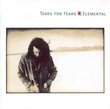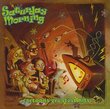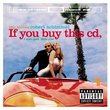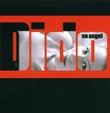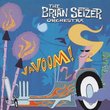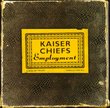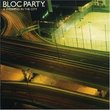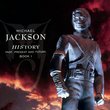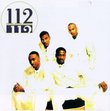| All Artists: Bill Haley & His Comets Title: Rock Around the Clock Members Wishing: 1 Total Copies: 0 Label: Mca Release Date: 3/23/2004 Album Type: Original recording remastered Genres: Pop, Rock Styles: Oldies, Oldies & Retro Number of Discs: 1 SwapaCD Credits: 1 UPCs: 602498613627, 0602498613627, 5099749858626 |
Search - Bill Haley & His Comets :: Rock Around the Clock
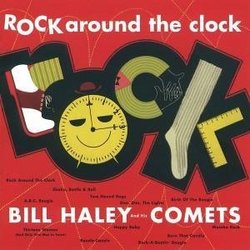 | Bill Haley & His Comets Rock Around the Clock Genres: Pop, Rock
|
Larger Image |
CD DetailsSimilar CDs
Similarly Requested CDs
|
CD Reviews"Rock Around The Clock" More Than a Great Album - It's an al Edward Dixson | New York, NY USA | 01/18/2006 (4 out of 5 stars) "Rock Around The Clock - the album, should be just as significant in music history as James Brown's Please Please Please album, a not only great sounding album but an album demonstrating the roots of Brown. I do however have a special interest in both albums. My father co-wrote Dim Dim The Lights featured on the Rock Around The Clock album. My father knew Haley and Alan Freed so what I am about to say not only gives this album its deserved kudos, it also sets the record straight via primary source information about the history of some of the songs on the album. Haley first recorded Rock Around The Clock in April of 1954. It didn't do that great, coming in at #33 and only staying on Billboard's Popular chart for one week. Freed had met Haley in 1953. He showed great interest in Haley, even having him on his radio show out in Cleveland Ohio. What interested Freed about Haley, like Elvis interested Sam Phillips, was that he was looking for a white artist to take R&B to the mainstream and thought Haley could be that vehicle. Freed wasn't naive. He knew he had to do it in this racist world using a white music act. However, he was not willing to do it at the expense of legitimacy. Haley would first have to get the stamp of approval not by white music critics or a white music audience. Haley would have to get his stamp of approval by the Black music audience. This is why, other than a featured guest spot,you don't hear Haley songs until Dim Dim The Lights on Freed's radio shows. Haley than scored a #7 pop hit doing a cover of Joe Turner's "Shake Rattle and Roll." He recorded his version somewhere in July of 54. Even that song was not played on a Freed show, although maybe Freed wanted to play it. However, after Haley recorded Dim Dim The Lights in the month of November 54, Freed noticed that it was getting a lot of airplay on R&B stations. Freed started playing the song when Dim Dim The Lights became the first R&B song recorded by a white artist to not only get on the R&B charts but land in its Top Ten. Freed was on WINS New York by then playing an authentic R&B program. Dim Dim was also a Top Ten Pop hit on the Variety Charts, which was a more prestigious chart than Billboard or Cash Box back then, making Dim Dim The Lights the first record by a white act to be on two charts - top ten at that. Everyone started playing and buying the three Haley songs that were lingering out there, which included left over Rock Around The Clock 45's still hanging around record stores from 54 and juke boxes. That's why one might see Rock Around The Clock getting significant juke box play around January of 55, which was clearly off the heels and success of Dim Dim The Lights. This would explain why the producer of the movie "The Blackboard Jungle" starring Glen Ford heard his little preteen daughter playing Rock Around The Clock in January of 55 on her record player. He liked the response his daughter was giving the record so he decided to use it in the movie's soundtrack. The success of the movie and its soundttrack told Decca Records to re-release Rock Around The Clock as a single in July of 55. That's why this album gets to us in 56. While there is no question that Rock Around The Clock became the anthem of the R&B genre under the now agreed term Rock n' Roll with its first Rock n' Roll Icon, Bill Haley, rather than Rhythm and Blues and historically is considered the first international R&B/RR record, Dim Dim The Lights no doubt led the way and as Alan Freed said, "...is the grand daddy song of Rock n Roll." There is room for little doubt that when Haley put an original thumb print on an R&B song he clearly performed a song in the Rhythm and Blues' spirit. That he didn't do with Shake Rattle and Roll. Maybe because he leaned away from the genre due to a command R&B performance by Joe Turner. But when he recorded Rock Around The Clock it was original and in the true R&B vain. It just had to wait for a stamp of approval. That came after he decided to record Dim Dim The Lights. My father told me that Haley did follow his demo that was given to him. So when listening to this great album you will see Haley at his finest R&B performance level with most of the songs. Pay close attention to Thirteen Women. It has a Cab Calloway Band feeling to hit. " What's on it Drogil | California USA | 06/29/2005 (5 out of 5 stars) "1. Rock Around the Clock 2. Shake, Rattle & Roll 3. A.B.C. Boogie 4. Thirteen Women 5. Razzle Dazzle 6. Two Hound Dogs 7. Dim, Dim the Lights 8. Happy Baby 9. Birth of the Boogie 10. Mambo Rock 11. Burn that Candle 12. Rock-A-Beatin' Boogie Bonus Tracks: 13. R-O-C-K 14. The Saints Rock'n'Roll 15. See You Later, Alligator " The First Rock and Roll Album to Chart Carl Savich | Detroit, MI, USA | 04/11/2004 (5 out of 5 stars) "Rock Around the Clock by Bill Haley and the Comets was the first rock and roll album to chart. Bill Haley and the Comets had released the earlier Shake, Rattle, and Roll LP album in early 1955 and the Essex LP album in 1954, but both albums failed to chart. The Rock Around the Clock LP charted in January, 1956, making the Billboard Top 40 Album Chart. The album collected the Decca singles or 45s that were released in 1954 and 1955 by Bill Haley and the Comets. The album includes the single ROCK AROUND THE CLOCK, which was no. 1 for 8 weeks on the Billboard singles charts and which eventually sold over 25 million copies. (Rock Around the Clock is in the Guinness Book of World Records. Here is the quote from the 1973 edition of the Guinness Book of World Records:
"The top-selling 'pop' record has been Rock Around the Clock by Wlliam John Clifton Haley, Jr. (born Detroit, Michigan, March, 1927) and the Comets, recorded on April 12, 1954, with sales of 16,000,000 by January, 1972." Rock Around the Clock was originally the theme song for the teenage angst movie BLACKBOARD JUNGLE starring Glenn Ford in 1955 where it was used in four strategic parts in the movie. It was the first rock and roll record to go no. 1 on Billboard. The record ushered in the rock and roll era and revolutionized pop music, going no. 1 around the world. The reord later was the theme song of the ABC TV series HAPPY DAYS and was in AMERICAN GRAFFITI. April 14, 2004 marks the 50th anniversary of the recording of the record at the Pythian Temple in New York City. This was the record that launched rock and roll. John Lennon (in his last Playboy interview in 1980) said that Rock Around the Clock was the record that got him into rock and roll. Elton John, David Gilmour, the lead guitarist of Pink Floyd, Jimi Hendrix, John Fogerty, Jeff Beck, were also influenced by that record. The album includes the other important Decca singles as well. The gold single SHAKE RATTLE AND ROLL is also included. All the Decca hits are on this album. There are also three bonus tracks: "R-O-C-K", "The Saints Rock and Roll", and "See You Later, Alligator". There are five songs that Bill Haley composed on this album: "The Birth of the Boogie", "Two Hound Dogs", "Rock-A-Beatin'Boogie", "The Saints Rock and Roll", and "R-O-C-K". The records showcase the remarkable lead guitar work of Danny Cedrone and Franny Beecher, who were ahead of their time. Danny Cedone's lead guitar break on Rock Around the Clock is one of the greatest and most revolutionary in rock and roll. It is the guitar solo everybody knows and remembers from the 1950s. Franny Beecher's guitar solo on "Rock-A-Beatin' Boogie" is years ahead of its time. The album also features "Mambo Rock", "Dim Dim the Lights", and the B-side to Rock Around the Clock, "Thriteen Women (And Only One Man in Town". This is the album that started it all. Alan Freed always said he got the term "rock and roll" from Bill Haley and the Comets. Several records have been cited as the source for the term: "Rock the Joint" (1952), "Rock-A-Beatin' Boogie" (1952 Esquire Boys version with Danny Cedrone;1955, Bill Haley and the Comets version with Franny Beecher), and "Two Hound Dogs" (1955). There is no doubt, however, that Freed got the term from Bill Haley and his recordings. Haley was consciously attempting to forge or create a new pop movement and a new sound, which was called rock and roll. Bill Haley was always at the forefront of the rock and roll movement. This album shows his impact and influence. It was these Decca singles collected on this album that initially were part of the rock and roll explosion that opened the door for the new music. Rock Around the Clock was the first rock and roll album or LP to make the charts. This was what it sounded like at the beginning. This is an album every rock and roll fan should have. This is the alpha and omega of rock and roll. This is where it all started. I highly recommend this album to everyone. Rock and roll became the greatest musical idiom of the twentieth century. Listen to what it sounded like at the very beginning on Rock Around the Clock. This album remains one of rock and roll's greatest and most important albums. In the record "R-O-Ck", Bill Haley stated that classical composer Johann Strauss popularized the waltz in the late 1800s, while William Handy popularized the blues in the 1920s, but in the 1950s, rock and roll had taken over from classical music and blues as the dominant form of music: "Strauss discovered waltzing, the Handy man found the blues..." Haley pointed to his record from 1953 CRAZY MAN CRAZY on Essex as the record that introduced rock and roll. It was the first rock and roll record to chart on the Billboard singles chart, reaching no. 15. But it was Rock Around the Clock in 1955 that broke the door wide open for rock and roll. And this album contains all the Decca singles that were part of the initial rock and roll explosion. Do yourself a favor and buy this CD. You will enjoy the seminal rock and roll records on this historic album. It is a unique experience. Enjoy it! And rock around the clock, rock, rock, rock 'til broad daylight!" |

 Track Listings (15) - Disc #1
Track Listings (15) - Disc #1

![Lotta Sax Appeal: A Saxophone Retrospective [ORIGINAL RECORDINGS REMASTERED]](https://nationalbookswap.com/cd//m/80/5980/655980.jpg)

